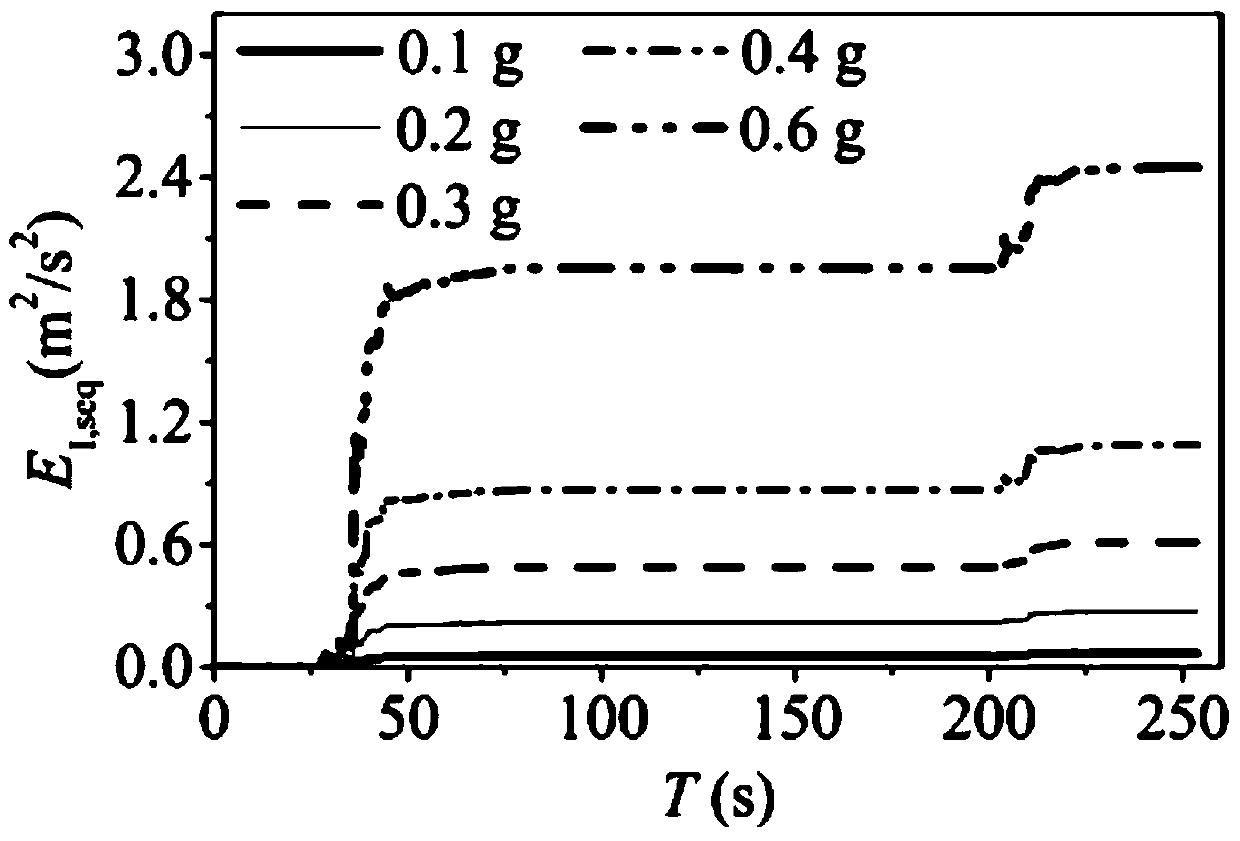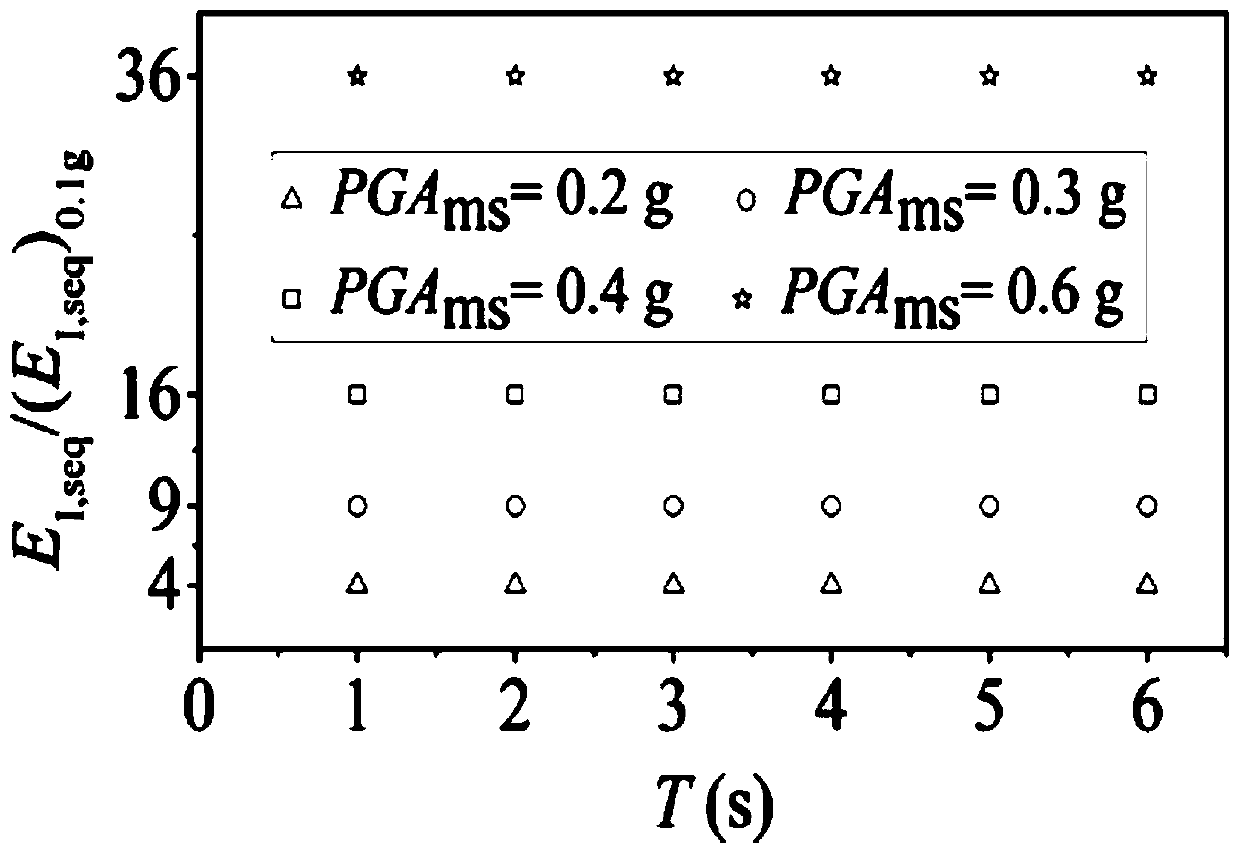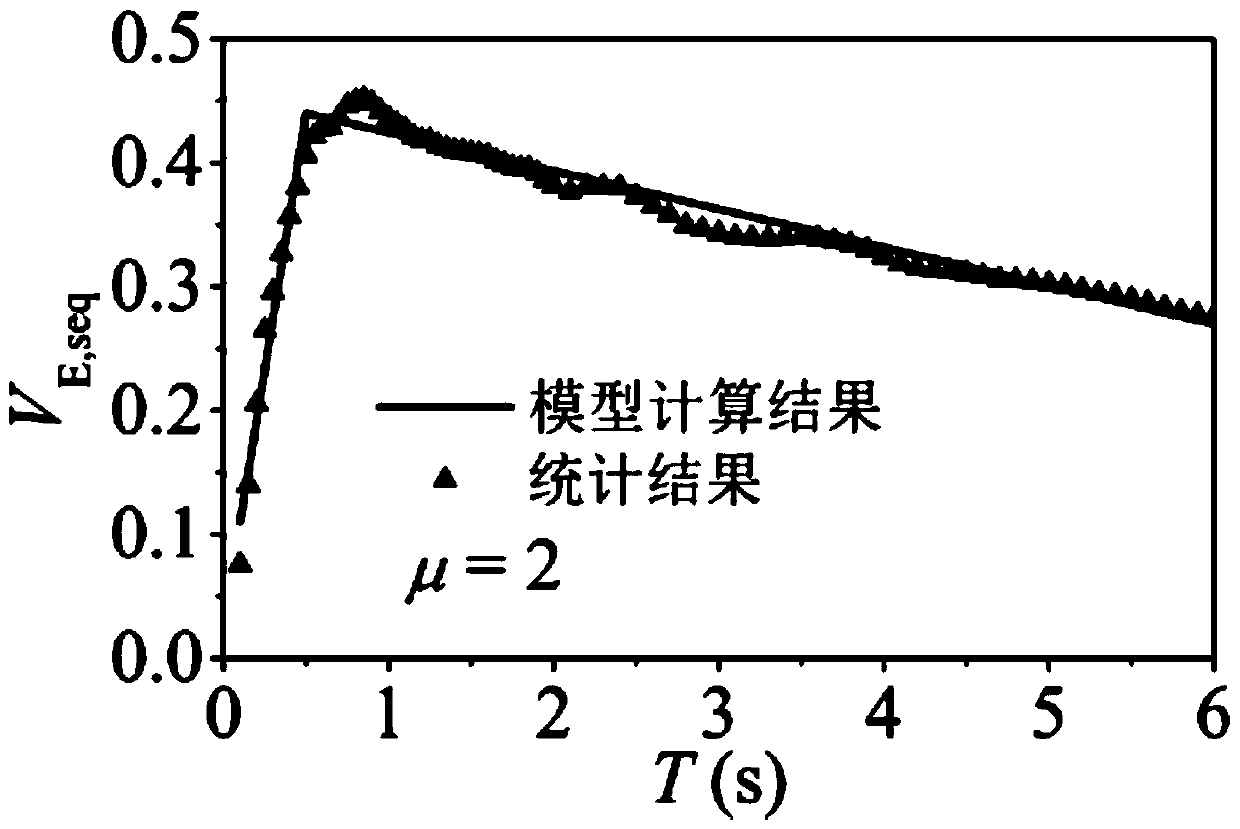A Method of Energy Spectrum Prediction Based on Main Aftershock Sequence
A prediction method and energy spectrum technology, which is applied in the direction of prediction, instrumentation, electrical digital data processing, etc., to achieve the effect of improving accuracy
- Summary
- Abstract
- Description
- Claims
- Application Information
AI Technical Summary
Problems solved by technology
Method used
Image
Examples
specific Embodiment approach 1
[0021] Specific implementation mode one: as Figure 7 As shown, an energy spectrum prediction method based on the main aftershock sequence includes the following steps:
[0022] When an earthquake occurs, a large main shock is often followed by many aftershocks. As far as the current stage is concerned, selecting all aftershocks for seismic design is a very difficult and huge project, which increases the amount of calculation to a large extent, but small aftershocks do not have much impact on the structure. In order to simplify the calculation, this paper selects a relatively large aftershock to form the earthquake sequence.
[0023] The ground motions of the main shock and aftershocks should be selected according to the following conditions: (1) The station where the accelerometer is located has sufficient geological and geotechnical information available; (2) The soil-bond interaction can be ignored in the records of the free-field station (3) The peak ground acceleration ...
specific Embodiment approach 2
[0034] Embodiment 2: The difference between this embodiment and Embodiment 1 is that the dynamic characteristics of the non-elastic SDOF structure in the step 1 are specifically:
[0035] The period range of the SDOF structure is 0.1-6.0s, the period interval is 0.1s, the damping ratio of the SDOF structure is set to 5%, and the hysteretic rule of the SDOF structure is selected as the ideal elastoplastic (EPP) model;
[0036] The lateral strength of the SDOF structure is determined by the ductility coefficient μ, the value of μ is 2, 3, 4, 5 or 6, and the calculation formula of μ is:
[0037]
[0038] where the x max is the maximum displacement response of the structure under earthquake action, x y is the yield displacement of the structure.
specific Embodiment approach 3
[0039] Specific embodiment three: the difference between this embodiment and specific embodiment one or two is: in the described step 2, solve the equation of motion of the inelastic SDOF structure that the base is subjected to horizontal ground vibrations to obtain E I The specific process is:
[0040] The motion equation of the inelastic SDOF structure whose base is subject to horizontal ground motion is:
[0041]
[0042] Where m is the mass of the inelastic SDOF structure, c is the viscous damping coefficient of the inelastic SDOF structure, f s is the restoring force of the inelastic SDOF structure, for v t The second derivative of , the absolute acceleration response of the inelastic SDOF structure, v t is the absolute displacement, v t =v+v g , v is the relative displacement, v g is the earthquake displacement;
[0043] Integrating both sides of formula (3):
[0044]
[0045] put v t =v+v g into formula (4) but can be rewritten as:
[0046]
[004...
PUM
 Login to View More
Login to View More Abstract
Description
Claims
Application Information
 Login to View More
Login to View More - R&D
- Intellectual Property
- Life Sciences
- Materials
- Tech Scout
- Unparalleled Data Quality
- Higher Quality Content
- 60% Fewer Hallucinations
Browse by: Latest US Patents, China's latest patents, Technical Efficacy Thesaurus, Application Domain, Technology Topic, Popular Technical Reports.
© 2025 PatSnap. All rights reserved.Legal|Privacy policy|Modern Slavery Act Transparency Statement|Sitemap|About US| Contact US: help@patsnap.com



